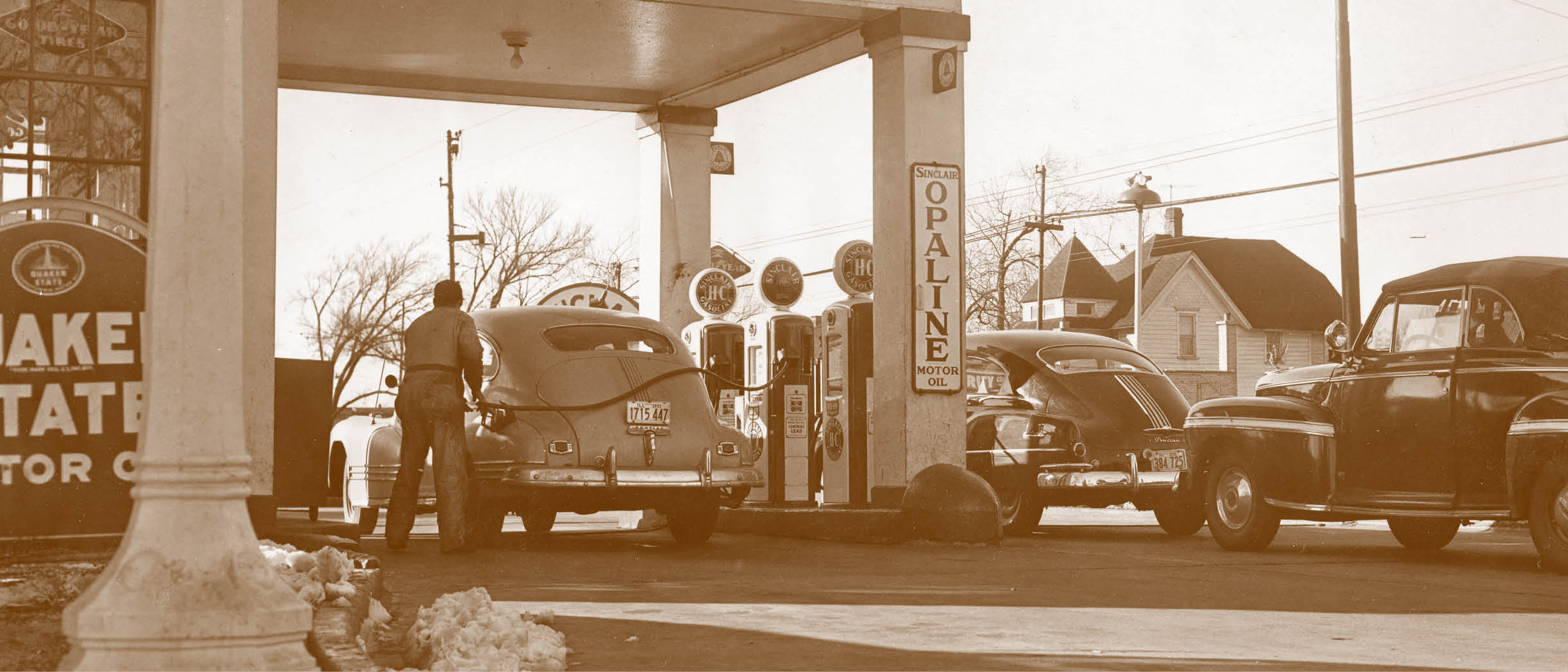Rewind time. We are in the USA. The sun is shining. It is warm, even though the forest is dressed in autumn colors. Yellow. Brown. Dark red. There it is – right next to a highway winding through the country – a service station. A business where the customer drives in. He does not even need to step out. Employees in coveralls jump out. They smile. And they swarm around the car with their polishing cloths… I love that image. But is that even what customers want?
I often hear customers complaining that they have to do all the work themselves nowadays. Ordering passports at the citizen service office. Transferring money at the bank. Food at fast food restaurants. Postal packages in the parcel locker. I could go on.
Where has the service gone?
Self-service solutions are growing at an explosive rate. But is self-service something new that has emerged with the internet and smartphones?
If we revisit the USA. All the way out west. And turn the clock back to 1947. World War II has just ended. In Los Angeles, California, a guy named Frank Urich gets the brilliant idea. He will let customers do the work. They should get out of the car and pump gas themselves. It is an exaggeration to say that customers flocked to the new initiative like bees to honey. But after a couple of years, the concept catches on. And then it grows rapidly. Because it is faster, cheaper and easier. And easy wins.
It is almost 80 years since Frank Urich got the idea. Self-service is not a novelty. The new thing is that many services have become extremely complex. Opportunities and flexibility have exploded. Customers want access anytime, anywhere. Self-service has followed suit. And customers often choose to serve themselves. Because it is easier.
Self-Service explodes
Lån & Spar has examined how many times a customer interacts with the bank across various channels. Customer meetings are the least used channel. An average customer has 0.4 meetings with their advisor per year. This means it takes 2½ years between each physical meeting the customer has with their advisor. The customer calls the bank three times a year and visits the bank’s website 40 times a year. That is a factor of 100 compared to meetings with the advisor.
But the big trump card is the bank’s app. On the mobile. The customer uses it 214 times a year. The customer checks the balance, transfers money, orders currency, buys stocks and much more. And the customer wants to do it themselves. Imagine having to go to the bank to check your balance… or just calling. You have to wait for the bank to be open, dial the number, go through the switchboard, wait for an available employee, greet them politely, talk about the weather… and then you can ask for the balance. With the app, the task is done before the phone number is dialed.
Customers prefer to serve themselves – once they have realised how easy it is. Because customers choose the easiest solution. Complexity and possibilities as well as the number of interactions have exploded for many services. The customer now ‘visits’ the bank over 250 times a year. This was not the case 25 years ago. It would be almost impossible if the customer had to physically go to the bank. Almost every day of the year.
Can we do without employees?
Customers are on board with the self-service wave. According to the ‘ACA Study Achieving Customer Amazement’ survey, 71 percent of customers use companies’ self-service solutions. So, what do we actually need employees for? Can we phase them out like fax machines and DVDs? The answer is unequivocal. No. Because what do customers do when something goes wrong? They try to contact people. People with emotions and empathy. They can understand customers’ problems. They can help. And they can be there to catch customers when they are about to fall. The survey also shows that 69 percent of customers prefer to call the company and talk to an employee – a real person – when they have a problem. And that number has increased by four percent (from 2022 to 2023).
Customers want employees, but they can largely serve themselves. So, they do not need clerks and salespeople. They want advisors and sparring partners. Employees who are experts, who are curious and interested. Employees who take the time to understand customers’ problems and make an effort to understand them. Employees who can challenge viewpoints and go further to develop solutions – not just what happens to be on the shelf.
Christina made me loyal
I am a customer at the Danish bank Jyske Bank. Three years ago, I got a new bank advisor. Christina. Our first meeting was scheduled to last an hour. Along the way, I had to buy extra time on my Easypark because the meeting ended up lasting three hours. And now I have a financial plan – for the rest of my life. It wasn’t Christina who kept me there. It was me who got caught up in the situation. Christina just got to know my situation well, asked the right questions, and knew how to challenge and guide me. As a result, she has won my heart. Christina has made me loyal – not the bank’s app.
People can create emotional experiences. The customer does not get that from the app. It is just convenient. Emotional experiences are a key ingredient in the cake that creates loyal customers and ambassadors. Christina has ensured my loyalty to Jyske Bank, and I have told all my friends about her. I have become an ambassador. And it is not the bank’s app I talk about – even though I use it almost every day.
Employees are a crucial part of the customer experience. They can create emotional customer experiences. They touch our feelings. And even though self-service solutions and AI are booming and making many operations far more efficient, they do not touch customers’ hearts. Yet.



